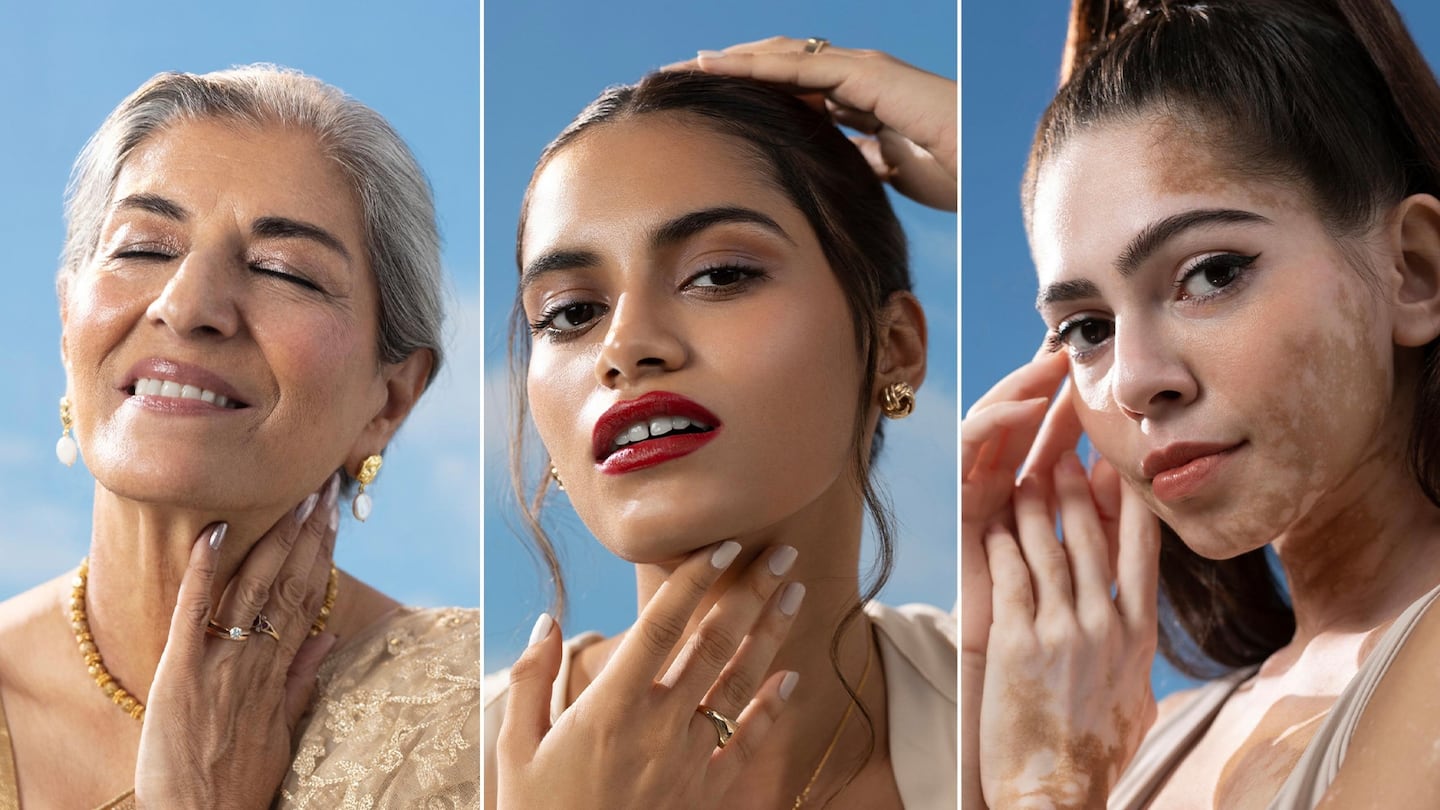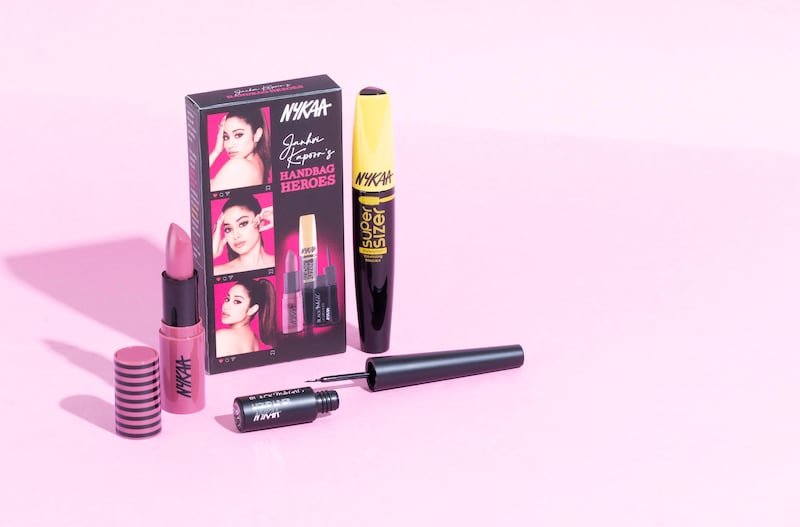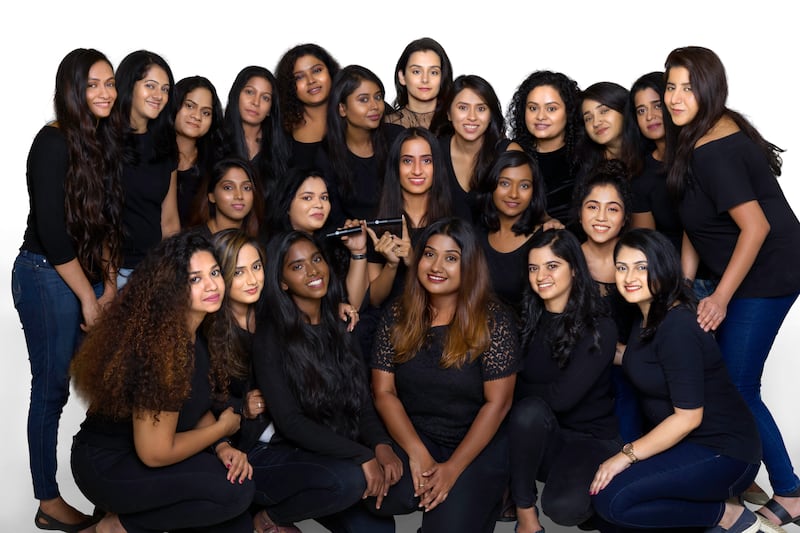
The Business of Fashion
Agenda-setting intelligence, analysis and advice for the global fashion community.

Agenda-setting intelligence, analysis and advice for the global fashion community.

When Sabina Sachdeva’s makeup bag contents begin to change, so too do those of her clients.
Moonlighting as a makeup artist for weddings and special occasions, the human resources executive from the northern city of Chandigarh is a big spender in India. Though she still champions international brands like Nars, Estée Lauder and Fenty Beauty alongside local beauty major Lakmé, the 33-year-old has been swayed by a new guard of Indian beauty brands eager to take market share from the incumbents.
Products from Kay Beauty, founded by Bollywood actor Katrina Kaif, lipstick from online beauty store MyGlamm, eyeliner from Sugar Cosmetics, and serum foundation from natural skin care brand Mamaearth have all caught Sachdeva’s eye. These and other Indian brands have been inspired by the direct-to-consumer playbook of their overseas counterparts and homegrown success stories like Nykaa’s bid to take on global giant Sephora.
“It’s good to try new Indian products because they are made for our skin and are pocket friendly. They’re great for everyday if you don’t want to use a 4,000-5,000 rupee ($48-$60) foundation,” said Sachdeva.
ADVERTISEMENT
Affordability is not the only reason consumers have started gravitating towards new local beauty and personal care brands. After all, locally made or similarly priced products from Hindustan Unilever’s (HUL) Lakmé, Revlon, L’Oréal and Maybelline have been ruling the market for decades. What then sets this new group of Indian brands apart?
According to analysts at Mumbai-based financial services firm Avendus Capital, the new guard have been quicker to identify local trends and consumer needs than the old guard. They are quick to bring products to market too.
Manish Taneja, CEO and co-founder of Purplle, an online Indian beauty retailer stocking many of these local brands, identified their forte early on.
“If you’re better at listening to data and knowing what the consumers want, you can go to the best labs in the world and they will make a product for you that fits your brief perfectly. You can quickly test that product with 100-200 consumers and… then roll it out to everybody,” Taneja said.
Purplle, founded in 2012 by Taneja and two other IT engineers, Rahul Dash and Suyash Katyayani, works with hundreds of influencers every month, educating consumers about new beauty brands, trends and products for its Youtube channel Glamrs by Purplle which has attracted 3.49 million subscribers.
The company now employs 45 people in its content team and operates a state-of-the-art studio in Mumbai for short- and long-form content. “We have the capability to run live and video commerce [but] we will use [that more] when it’s delivering the best bang for the buck,” Taneja said.
The digital prowess of companies like Purplle stands in contrast to “the more traditional larger beauty brands in India,” suggests Devangshu Dutta, founder and chief executive of retail consulting firm Third Eyesight. “They are more distant from their consumers due to the multi-tiered distribution and possibly less nimble in responding to market shifts,” he said.

The focus on speed has certainly paid off for some younger brands. Consider this insight from Avendus Capital: while it took some global household names 20 years to reach the 100 crore rupees ($12.3 million) revenue mark in India, Sugar Cosmetics breached the milestone in just four years; Mamaearth and MyGlamm did it in just three.
ADVERTISEMENT
Sneha Mankani, a beauty editor who previously worked at Vogue India, notes that some younger brands have been better at monetising the exposure that Indian consumers now have to international beauty content, products and trends.
“Terms like hyaluronic acid or niacinamide in skin care would seem like gibberish to a consumer [in India] a few years ago, [but they] are now being searched for in skin care essentials,” she said, adding that newer local brands are also breaking out of stereotypical definitions of beauty, especially the focus on lighter skin that has long dominated the Indian beauty narrative. “It’s good to see words like ‘fairness’ not come up in product descriptions and selling points [as much as before].”
Others have focused on the so-called clean beauty market with more sustainable, organic, or chemical-free products. Juicy Chemistry, a DTC personal care brand founded by Megha Asher and Pritesh Asher in 2014, for example, says its ingredients are cultivated in organic farms and are free from genetically modified organisms, pesticides and fertilisers. The Coimbatore-based company, which makes products like kakadu plum and pomegranate facial oil, was valued at $20.9 million in 2021.
In India, investment is still flowing into the DTC segment despite the 2022 funding crunch that faced startups across other sectors.
Two Mumbai-based beauty brands that started with a DTC business model were among those to secure investment last year. Sugar Cosmetics, founded by Kaushik Mukherjee and Vineeta Singh in 2015, raised $50 million in a funding round led by the Asia fund of L Catterton and Plum Goodness, founded by Shankar Prasad in 2013, raised $35 million in a series C round.
Meanwhile, the western market narrative of a “DTC crash” and other challenges associated with the decline of international brands such as Morphe haven’t resonated as strongly with investors in India. However, cracks may be emerging as analysts claim some of the new digital-native beauty companies readying for an IPO are overvalued.
The rise of DTC beauty and personal care brands in India can be attributed in no small part to improvements in local digital infrastructure.
“In recent years, internet-first DTC brands [in India] have been hugely enabled by the growing penetration and acceptability of e-commerce, digital payments, better point-to-point small logistics infrastructure, and the growth of non-traditional marketing including social media influencers,” said Dutta of Third Eyesight.
ADVERTISEMENT
Sugar Cosmetics, for example, has amassed close to a million subscribers on its Youtube channel and 2.5 million Instagram followers. Chief executive Vineeta Singh says the company works with about 5,000 influencers nationwide at any given time, focusing on the experiences of “real women” to create a sense of authenticity. “We really needed a lot more real role models [in India],” she said.
Another important driver is the emergence of a sub-group of digitally savvy middle-class consumers in India who are more inclined to pay a premium for better quality products than they were in the past.
This sub-group is fast becoming a distinct demographic. They tend to place a greater emphasis on finding brands that represent their identities and knowing what goes into the making of the products. VS Kannan Sitaram, partner at early-stage venture capital firm Fireside Ventures, puts their number at around 30-40 million people.
“That’s the first trigger for the emergence of these DTC brands. They cater to a consumer segment looking to buy stuff which may not be serviced by big companies. Big companies have a different strategy. They’re looking at how to get deeper into rural India, how to move people from unbranded to branded products,” explained Sitaram.

Young Indians’ growing willingness — across lower middle to upper income brackets — to experiment with niche and novel beauty products also helps local independent brands to gain market share.
Indeed, established beauty brands in the country used to scoff at the mention of DTC competitors only a few years ago but no more, says Rohit Krishna, general partner at early-stage investment firm WEH Ventures.
With some newer brands now doing well in major retail chains, Krishna believes mass market consumers will take notice next. But he warns that smaller digital-first players will have to manage the costs associated with adding more distribution channels to the mix. “This automatically means they will need a larger team… [and] it could become harder to manage and scale,” he said.
Apart from multi-brand giants that have listed like Falguni Nayar’s Nykaa (which last year grew its offline retail presence to over 100 mono-brand stores from 73) and unicorn Purplle (which has eight stores), most digital-first Indian beauty companies are still far from the scale and reach of FMCG behemoths like Hindustan Unilever Ltd (HUL).
HUL’s beauty and personal care segment, which includes multiple brands like Lakmé, Glow & Lovely, Dove and Pond’s reaches nine out of ten consumers in India with a network of nine million points of sale and 3,500 distributors. The conglomerate posted revenue of 19,460 crore rupees ($2.4 billion) in FY2022.
Though they are not remotely in the same league as HUL, some young digital-first players are making serious headway thanks to an increasingly flexible approach to distribution.
Sugar Cosmetics has expanded out from online channels and now boasts more than 40,000 points of sale including kiranas (small mom-and-pop shops) and 130 monobrand stores across India. According to CEO Singh, the brand is riding the wave of a generational shift. “An average 24-year-old today uses two to three times more product than 48-year-olds,” she said.
“The change was driven by more Indian women going to college and to workplaces and thus beginning to think more about the way they look and associating makeup with confidence,” added Singh, highlighting that her focus has been on creating “extremely long lasting” products suited to harsh Indian weather conditions and multiple shades for Indian skin.
Similarly, Plum Goodness, which makes vegan skincare, hair care and beauty products, has expanded to over 300 cities with 1,300 manned outlets and about 13,000 unmanned outlets, according to founder Shankar Prasad.
“We’re sometimes surprised to see the response in a city like Guwahati (the commercial capital of the eastern state of Assam). There’s a lot of purchasing power, awareness and acceptance of the brand outside of top metros [like] Mumbai or Delhi. We believe metros are over-serviced in terms of channels and brands compared to smaller towns and cities,” Prasad said.
Another young personal care and beauty company enjoying rapid growth is six-year-old Mamaearth. Parent firm Honasa Consumer, which filed for an IPO late last year, reported that year-over-year revenue from operations doubled to 943 crore rupees (about $114 million) for the year ended March 2022.
Varun Alagh, co-founder and CEO of Mamaearth, attributed its growth to several factors but highlighted speed. “Our consumer keeps us updated on demands across categories and hence our turnaround time on innovation is faster,” he said, pointing to last year’s launch of a new skin care brand based on ayurvedic recipes called Ayuga.
Meanwhile, Wow Skin Science, a Bengaluru-based company in the clean beauty space selling on online marketplaces like Amazon and Flipkart as well as specialty fashion and beauty retailers Nykaa and Purplle, raised about $48 million from Singapore’s sovereign wealth fund GIC. The company founded in 2006 by Manish Chowdhary and Karan Chowdhary has expanded beyond India into neighbouring markets Nepal and Bangladesh, and the US where it retails in Walmart stores.
India’s increasingly dynamic beauty and personal care category is making it attractive to a host of new entrants, both local and international. Bollywood actor Deepika Padukone recently launched her own line of cruelty-free and vegan skin care products under the brand 82°E and Zara Beauty debuted in the country not long after Estée Lauder’s Too Faced opened its first store in Delhi.
“The growth is so rapid that I discover at least one new homegrown brand a week, across all spectrums — from makeup to skincare and hair care,” says Sneha Malkani, adding that some consumers tend to be more open to trying new Indian brands when they see campaigns featuring real people promoting products that focus on Indian skin and hair.
India’s beauty and personal care market has been relatively resilient throughout the Covid-19 pandemic. According to Euromonitor International, the retail value of the market remained above 2019 levels during the period spanning 2020 and 2022. Going forward, the market is expected to grow from $16.5 billion in 2023 to $18.4 billion by 2026, reflecting an increase of 11.5 percent.
The sector will be driven by robust demand across the consumer market, as India is expected to be one of the world’s fastest-growing major economies. The World Bank recently forecasted 6.6 percent GDP growth in the next fiscal year, not far off the 6.9 percent expected for this year. In a somewhat gloomy global business environment, this makes India a bright spot among other major economies facing either a downturn or decelerating growth.
Flipkart’s Kanchan Mishra cites two important factors driving the beauty sector’s upward trajectory. The first is that one segment of Indian beauty consumer typically still only uses three to four products in their regime, significantly fewer than more mature markets like the US or South Korea, and the second is that household penetration of beauty products is comparatively low.
“Both of these [factors] offer huge headroom for growth. Historically, the challenge has been that the cost of distribution has been very high, which becomes easier for DTC brands,” says Mishra, Flipkart’s senior director, consumables (FMCG), home and general merchandise.
Incumbent personal care giants like HUL and P&G have taken notice, prioritising digital channels to introduce household names from abroad. At Lakmé, digital is now said to be responsible for 30 percent of its business and management has reportedly created dedicated spaces within existing factories to manufacture digital-first brands.

Another Indian giant looking longingly at the local beauty market is Reliance Retail, run by billionaire Mukesh Ambani’s conglomerate Reliance Industries Ltd.
According to local media reports, the firm has been in talks to acquire the rights for Sephora India from Arvind Fashions Ltd. Reliance is also believed to be launching a new online beauty platform, tentatively called Tira, which could be integrated with the group’s fashion site Ajio, and jointly developed by the company’s recent acquisition e-pharmacy marketplace Netmeds.
Separately, Reliance is planning to build a portfolio of 50 to 60 grocery, household and personal care brands within six months, according to sources who spoke to Reuters, though distribution will likely focus on kiranas and larger physical retail outlets across the country.
Meanwhile, consumer goods company Dabur India has been working on its own DTC channel called Dabur Shop. “This will, over time, become a one-stop shop for the entire Dabur range… [but] we also intend to use Dabur Shop as a platform for special digitally curated or digital-first brands and products,” said CEO Mohit Malhotra. Currently, about 10 percent of the company’s revenue comes from digital channels.
Other established players are on the lookout for exciting new investment opportunities in beauty or ways to refresh the legacy brands in their portfolios, either infusing them with purpose or making them more locally relevant.
Estée Lauder, in collaboration with Nykaa, have launched an awards program for upcoming Indian beauty brands called Beauty&You which Nykaa’s beauty e-commerce CEO Anchit Nayar, described as an opportunity “to build their brand in a sustainable manner and eventually go global.”

Nykaa’s partnership with actor Katrina Kaif for the 2019 launch of its celebrity brand Kay Beauty, and its collaborations with Bollywood stars Janhvi Kapoor and Masaba Gupta for co-branded lines, are helping to generate even more online buzz for the firm. For its celebrity play, Lotus Herbals went down the investment route, taking a stake last year in start-up Better Beauty, co-founded by actor and influencer Anita Hassanandani.
Global brands have followed suit. Estée Lauder India roped in the country’s former Miss World winner Manushi Chhillar as the face of its Advanced Night Repair in a bid to connect with a young, digital audience, a move similar to MAC’s appointment of Bollywood actor Bhumi Pednekar as its first brand ambassador in India.
These large brands may not be as nimble as the emerging digital-first players in India’s rapidly evolving beauty market but, with much bigger marketing budgets, they can potentially spend their way to growth if they do more than just piggyback off the millions of followers of their celebrity partners.
A spate of other niche brand acquisitions has hit the headlines in recent years and many have been made by India’s FMCG majors. In 2020, Marico acquired DTC men’s grooming start-up Beardo, and a year later the company took a majority stake in the parent company of ayurvedic beauty brand Just Herbs, further expanding its digital-first portfolio. A rival, Emami, then upped its stake in grooming start-up The Man Company.
International private equity players are starting to get in on the action too. Earlier this year, Carlyle took a majority stake in Vandana and Mukesh Luthra’s India-based beauty and wellness services firm VLCC. Some analysts suggest it is only a matter of time before overseas beauty conglomerates and brands respond with M&A plays of their own in a market as dynamic and increasingly competitive as India’s.
The Indian beauty unicorn is preparing for an IPO that could see it reach a valuation of $3 billion thanks to persuasive digital marketing and a hyper-local merchandise mix.
Estée Lauder and Puig are investing in Indian ayurvedic beauty brands, but can they overcome the many challenges associated with incorporating ancient practices into a modern, global business?
Fashion players are increasing their investment in merchandise and campaigns pegged to India’s biggest holiday after two years of muted celebrations.
As in-person retail continues to recover, store owners and marketers are working hard to press the main advantage analogue shopping has over digital: its appeal to all the senses.
What had once been a nimble, innovative company, became slow-moving and cautious causing it to miss out on what is now a strong beauty market because it retreated precisely when rivals went all in.
According to an email viewed by The Business of Beauty, the company will be on hiatus while it establishes a sustainable path to return as a new company.
The surfing legend, a vocal opponent of chemical-based sun protection, is launching his own line of natural skincare products this week.